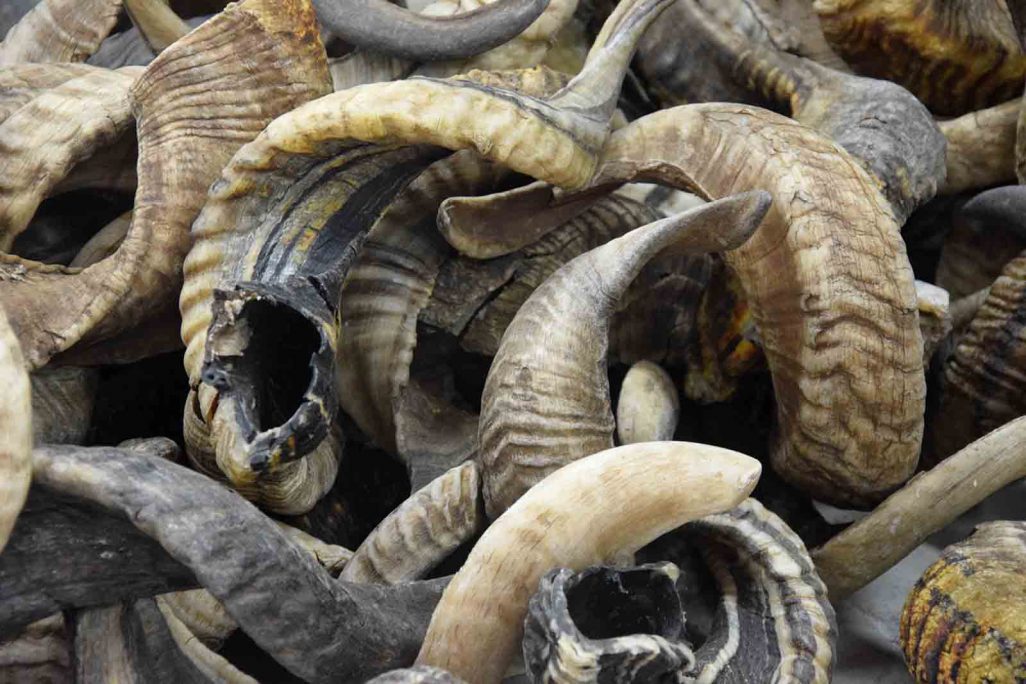
Rosh Hashanah is just around the corner and throughout Israel and the Jewish world, the unmistakable call of the shofar blast announces its approach. While Jewish New Year celebrations are ramping up all over Israel, the global market reveals that some unlikely guests from China have joined the party. In a world in which the true identity of the producers of consumer products is hazy, Shimon Keinan from the Golan Heights says: “We have a face and a name.”
Keinan was born with a love for shofars. It is as simple as that. There is no logical explanation as to what could drive the immensely prolific production of shofars at his Kol Shofar (Voice of the Shofar) factory other than old fashioned love. Keinan was born in Morocco, and moved to Israel with his family when he was just eighteen months old. He grew up in the city of Tiberias on the shores of the Sea of Galilee.
“I was born with a shofar in my hand. By the time I was nine or ten I already knew how to blow the shofar,” Keinan says. "As a kid I would sit in synagogue and watch the guy blowing the shofar. We didn’t have any money, so my first shofar I had to make for myself out of some hosepipe and a gasoline funnel.”
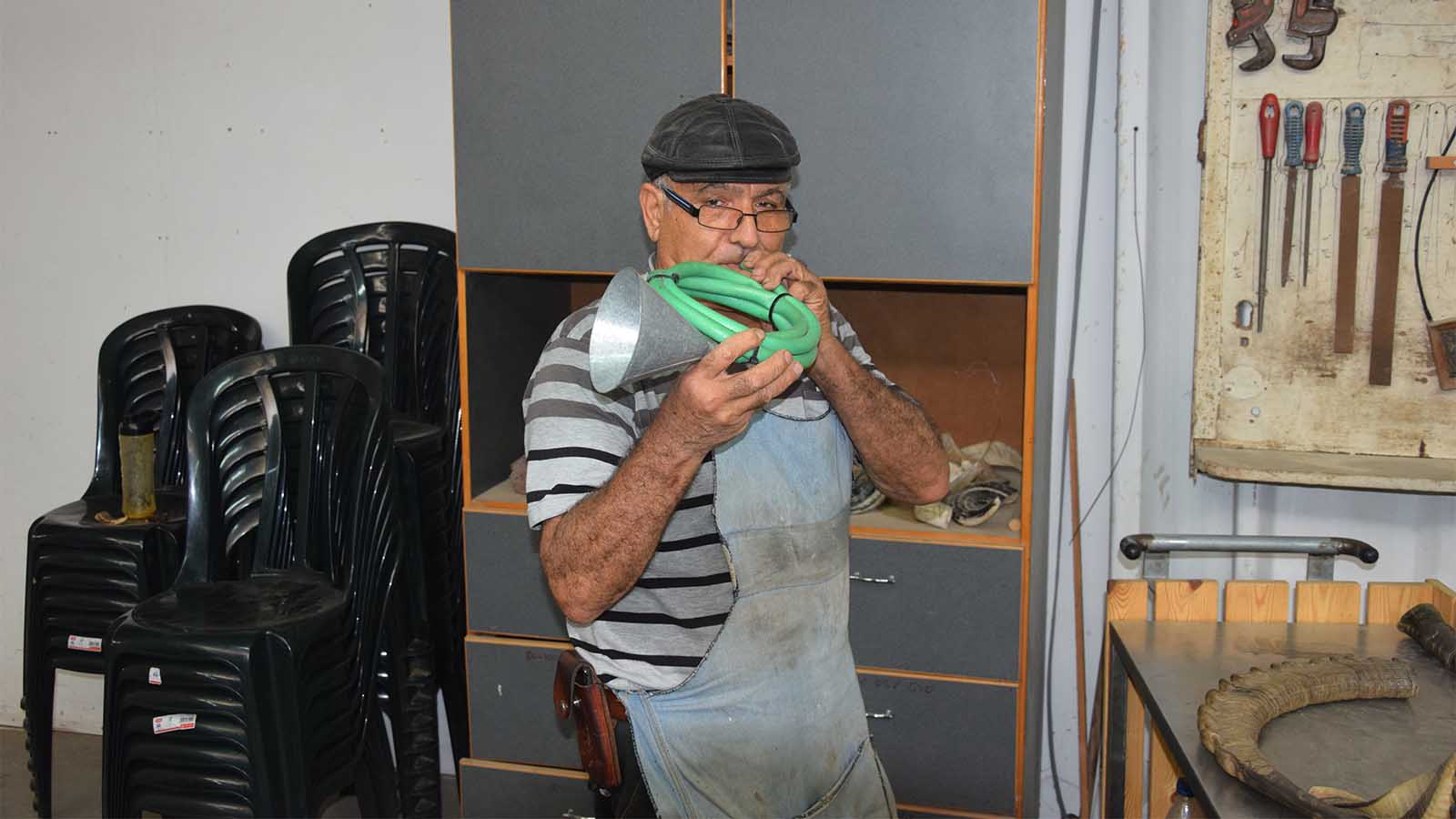
Shimon Keinan’s father was a carpenter and he himself studied metalworking at a vocational school in Tiberias. Keinan eventually found himself at Moshav Givat Yoav where he traded in metalwork and raising turkeys. Until one day, nineteen years ago, he decided to turn his passion into his life’s work and started manufacturing shofars inside a turkey coop.
“I raised turkeys for 30 years until I went bananas for shofars. I’m a metalworker by trade. Most of the sheds throughout the Golan Heights are my work. Nineteen years ago, I made a big change in my life and I built everything with my own hands,” he says. Of his four children, only one of his three sons, Hanan, works in the business.
Chasing the horns
The production process begins with importing the horns, rams’ horns, which is a major challenge.
“First of all, they are crazy expensive. Secondly, they are hard to get your hands on. It is harder to get the horns than it is to sell the finished product,” Keinan says.
“We import the horns from the Islamic world. Right now, I work with Morocco, because it suits me. I tried out Turkey once but… because of the climate and the animals’ diet, their horns were really unsuitable. I need top quality. And the quality of the Moroccan horns is the best.”
The quality of the Moroccan horns and Keinan's own biographical background make for a winning combination.
“I know the language back to front. I’m a champion at Moroccan Arabic, I feel at home there.”
“I go there to personally sort through the horns. I work from dawn until dusk. I sit there with piles and piles of horns and just sort them all day. In 15 days, 20,000 horns. The horns themselves come to Israel on a ship,” Keinan says.
“I travel once every two or three years. I also bring horns for people in Israel who run shofar-making workshops in schools and kindergartens. They take small horns and make shofars and show the kids.”
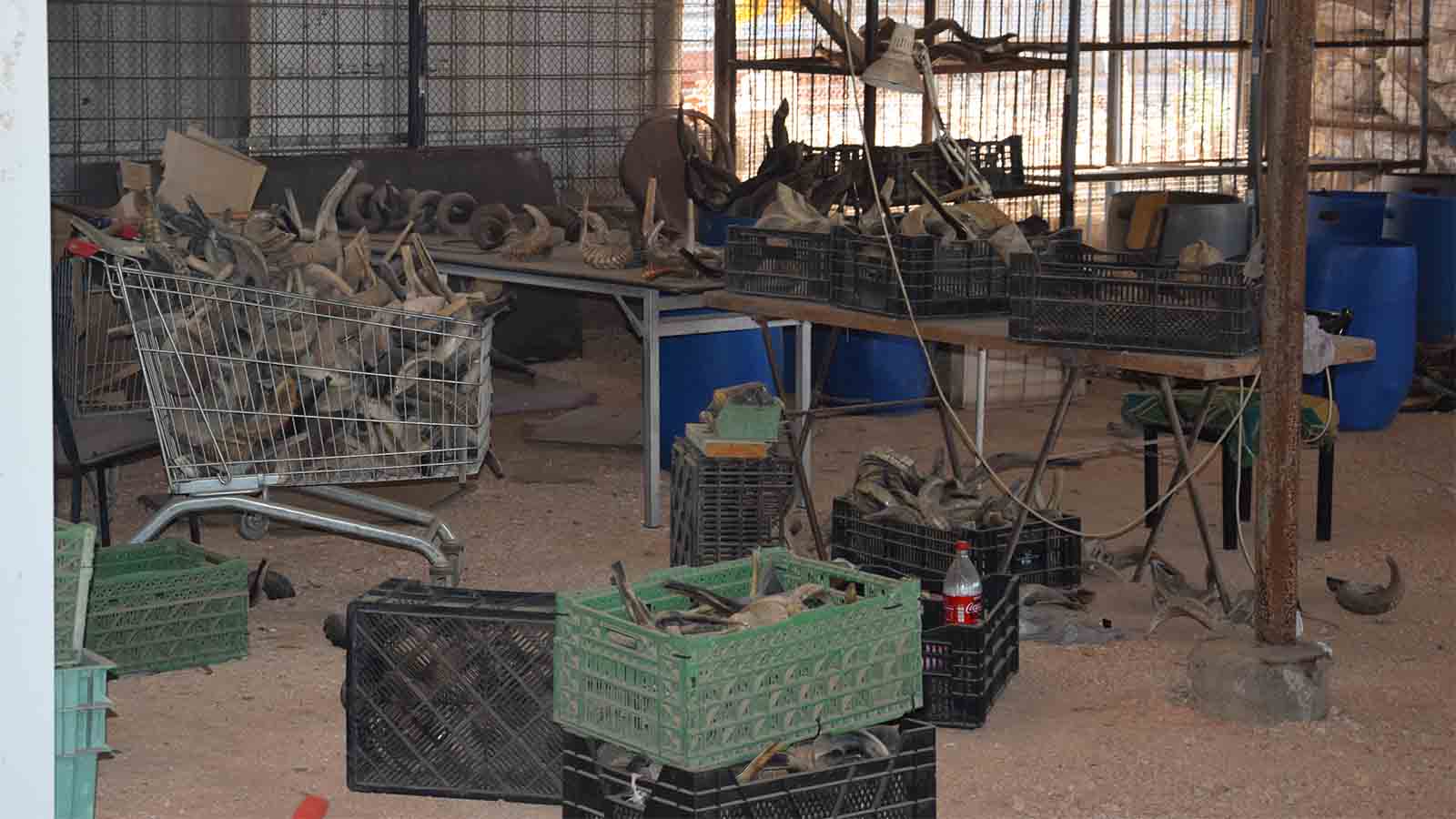
- So why the Islamic world? It turns out that there is a serendipitous relationship between the Muslim and Jewish holidays.
“Arab countries eat the most lamb and they do the most slaughtering around the time of Eid al-Adha, seventy days after Ramadan, when the head of every household slaughters a male sheep at least one year of age,” Keinan said. "In Israel lambs are slaughtered at just eight months old, before their horns can be used. A male sheep starts to grow horns at 13 months, at which point he reaches maturity and we call him a ram.”
Keinan deals in horns, and the shofar is not the only product he produces. He also makes horn mezuzah boxes. “It is a very unique and prestigious object. No one else is as crazy about horns as me,” Keinan says with pride. “Horns for me are like jewelry for you.”
Production is not dependent on Morocco alone. “I buy from whoever wants to sell,” he says. “Some horns, like antelope, we import from Namibia, in Africa. My eldest son just returned from there, he was in South Africa taking care of importation. When I import, I have to see the product first, make sure there are no cracks or flaws.”
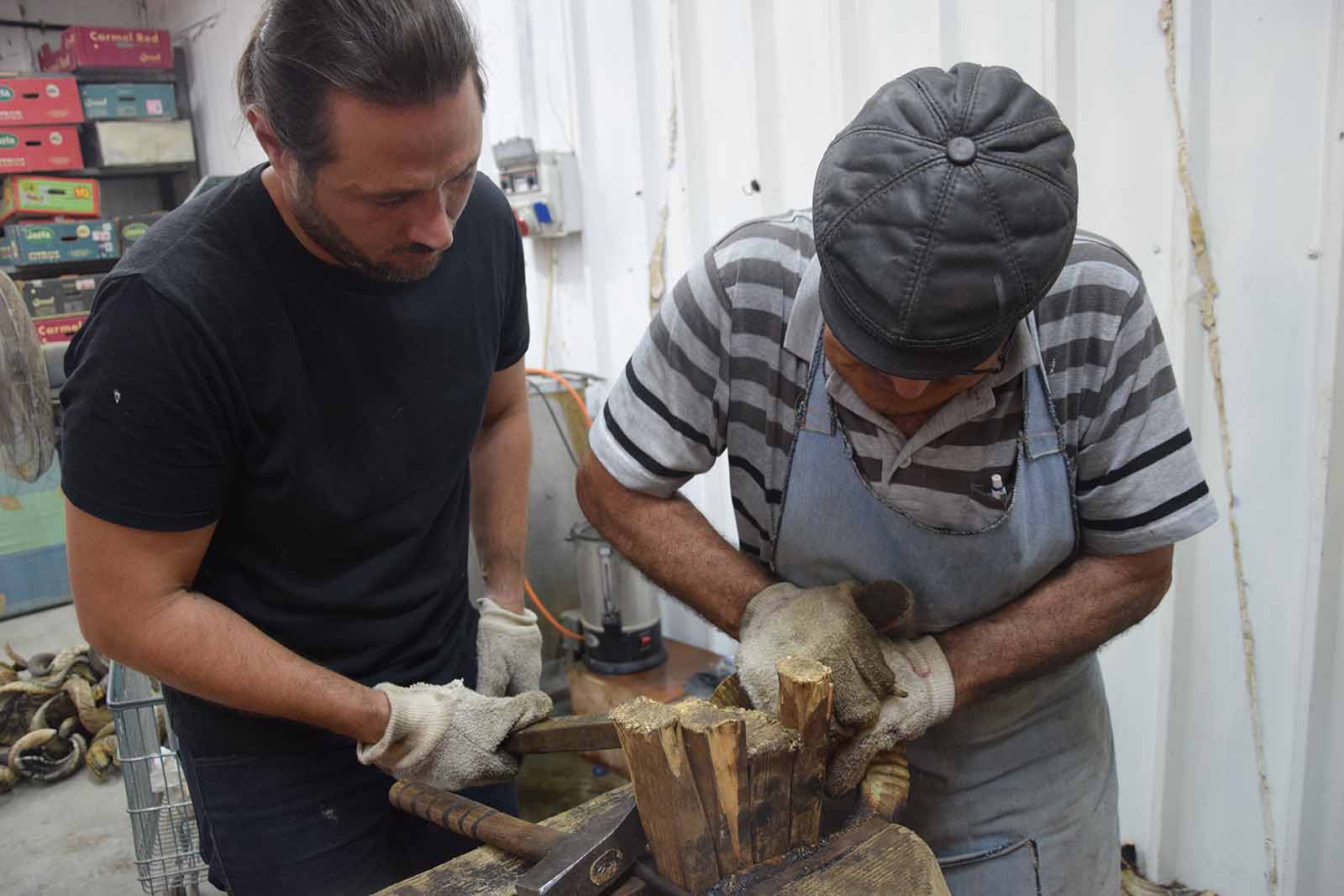
Buying and importing from Arab countries is not unaffected by Israel’s security situation.
“I prefer to keep 15,000 horns in reserve just in case there is an escalation in tensions with the Palestinians, so I won’t find myself out of stock and unable to travel. I always want to make sure I have enough horns," he says. When it’s tense over here, it means there will be tension over there too, and I need to know what I’m getting myself into. What, you think they are pro-Israel over there? Even though they look after us and everything’s fine and I feel great, I still think about it.”
Keinan takes pride in the various kinds of horns he procures – and there are a lot of them: oryx, ram, kudu, antelope.
“All horns are byproducts of slaughter. It’s not like people went out there and killed some animals for their horns. There are no specialized horn farms, otherwise shofars would cost millions,” Keinan explains. “The cheapest shofars cost around 80 shekels, and the most expensive can typically cost over 2,000 shekels, depending on size and quality. And sound, of course. The cheapest shofar is made of ram’s horn and the most expensive is ibex. It’s hard to find.”
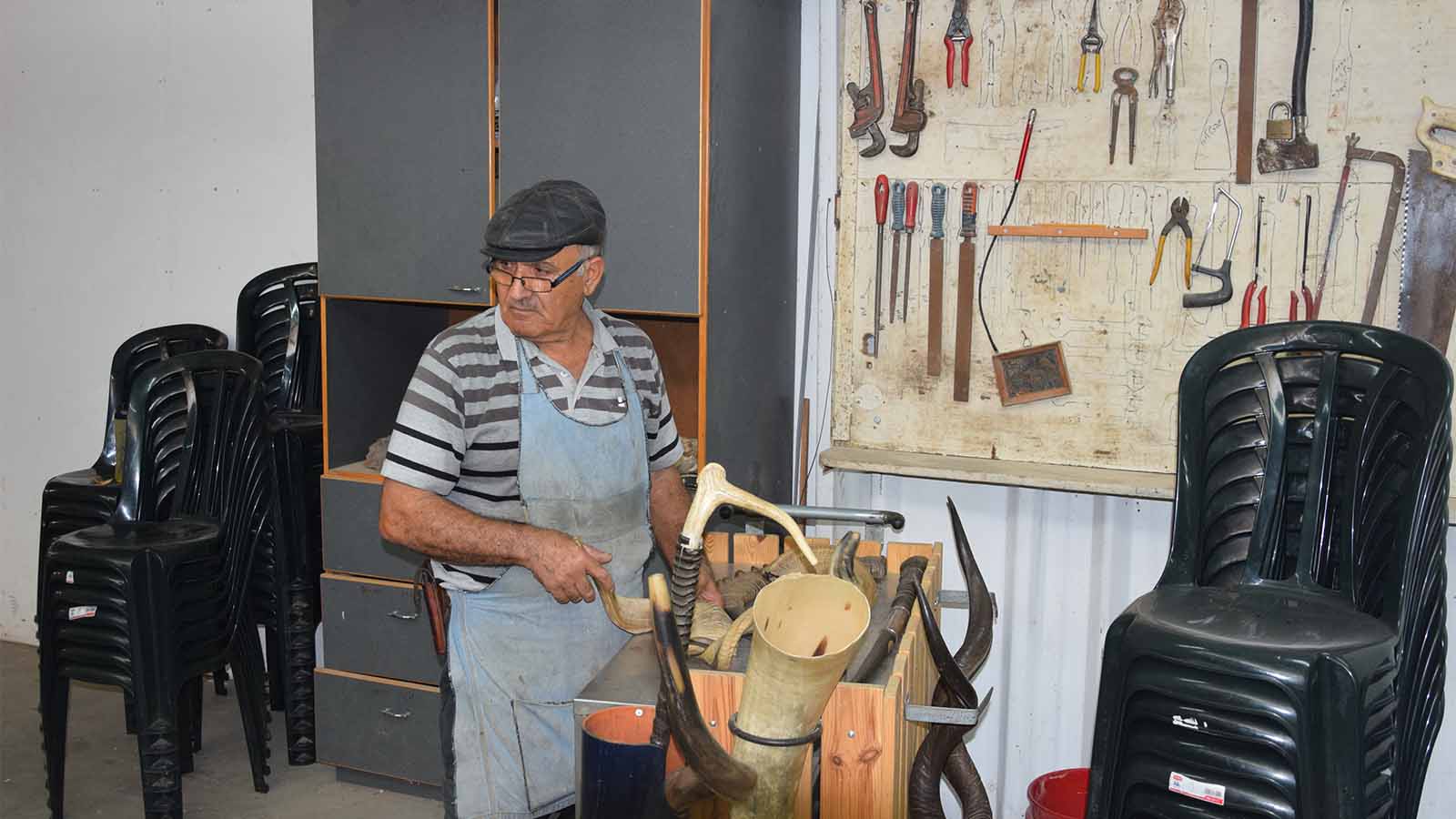
Art, not science
From the moment the horns arrive in Israel, usually by shipping container, the process of transforming them into shofars begins. This process is by no means an exact science, Keinan enthusiastically reminds us: “It is an art! Every single factor affects the sound. Each shofar is shaped so as to allow us to make the most out of it.”
A total of five employees, including the secretary and seasonal workers, perform all 14 stages of the production process. On the surface, the process appears straightforward, but to observe Shimon studying the horn before turning it into a shofar is to observe the very definition of an artist at work.
“First we straighten the horn. After straightening it we make a cut at the end, piercing it to prepare the mouthpiece. Then we heat the area and poke it through with a pencil, widening out the opening to create a suitable mouthpiece. Afterwards, we drill it. Then we brush and polish the shofar. There is a machine that does 3,000 revolutions per minute. We use a paste made from stone.” Keinan pauses to show off his machines and says, “This machine is our design. I’m a Tiberias Amal Vocational School graduate so I know how to build the machines.”
Production takes place all year round, and Shimon also markets his own finished product.
“Our shofars have three parameters: firstly, they are odor-free, we are experts at this; secondly they are easy to blow. Each and every one of our shofars is easy to blow, this is our artistry. The third thing is that I upgrade the quality of the sound via the mouthpiece. The mouthpiece is the soul of the shofar," Keinan says. "i was born with a shofar and I developed everything through a lifelong dream which I’ve made come true.”
At the end of the process Shimon stops to demonstrate how to blow the shofar on three different finished products. The sound is perfect and Shimon’s face beams with satisfaction.
Global competition
“The competition isn’t between factories. The problem is in the importing. Especially those who import from Morocco and China,” Shimon says as he shows me a newsletter from the local synagogue with the following headline: “Rabbis warn: the Israeli market is flooded by un-kosher Israeli shofars.” Shimon explains that the intensity of global competition in the shofar market has seen un-kosher shofars enter the Israeli market from the outside. He tells me that there are four factors in determining a shofar’s kashrut: “It must be a ram’s horn, at least 20 centimeters long, without punctures or cracks.”
Local production allows for greater oversight.
“Our production process involves 14 stages, and mistakes can happen anywhere along the way. Some people over there cover up the mistakes and the article [from the synagogue newsletter] discusses invalid shofars that are given the kosher stamp of approval anyway. And then they get advertised and sold in all of the stores throughout Israel because of their low price. There have been shofars from China here for many years already. Since 2005. The Jews place the orders and [the Chinese] make them. That’s the whole story. People buy them, and more often than not it’s due to a lack of knowledge. They just don’t understand,” he says.
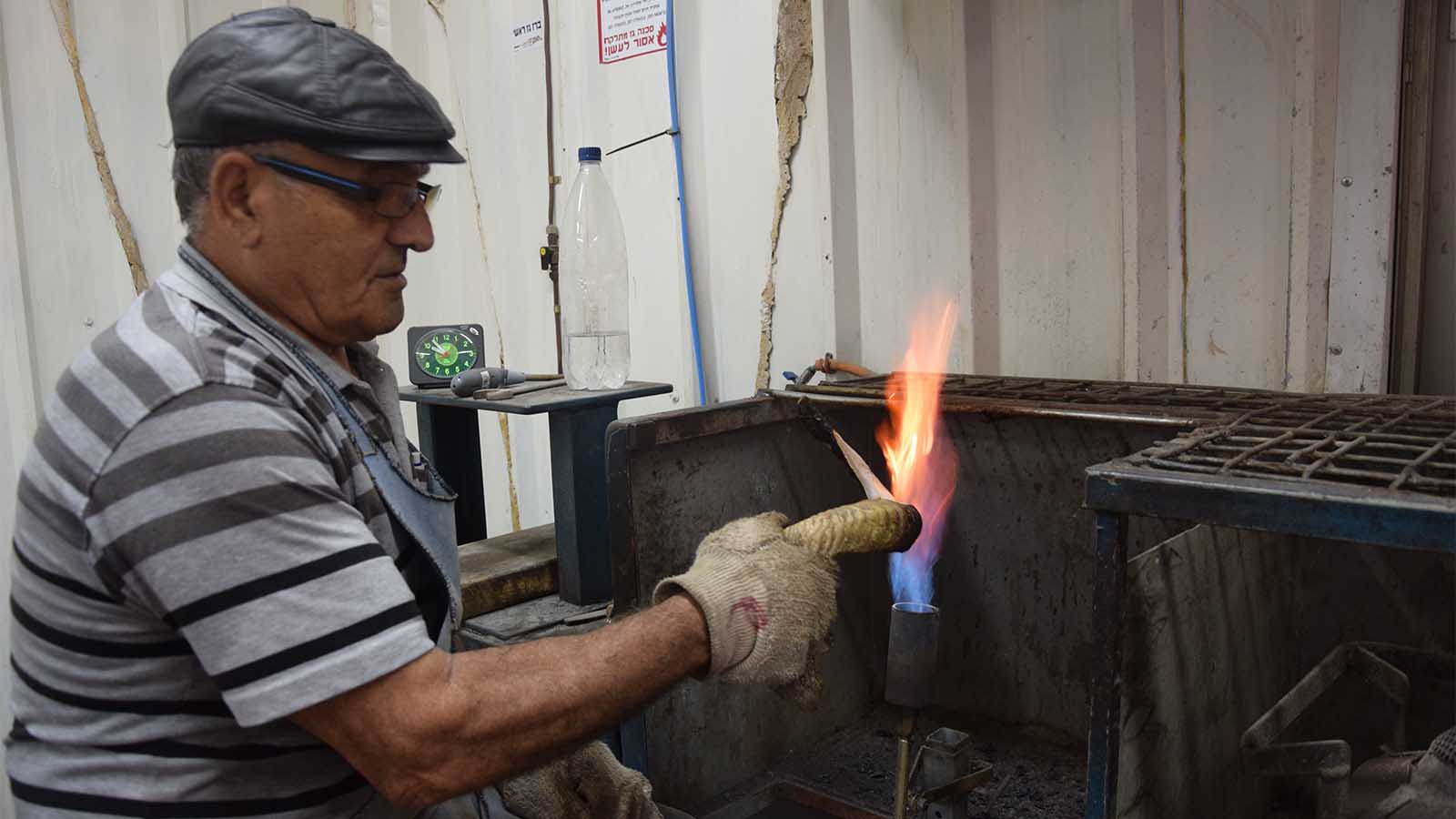
When Shimon is asked to explain what sets apart an Israeli-made shofar from one made in China, he answers: “First off, ours aren’t made on Shabbat. Second, our quality is simply top notch. You just can’t compare them with those that come from China or Morocco. Our quality is better and also in terms of kashrut, I work with all the kashrut authorities. Every rabbi in the country has been through here. I tell people: ‘Buy from Israeli artisans. Plus, you know us. We have a face and a name. When it's made over there you don’t know who is making your shofar. In my factory, if one shofar comes out faulty, I’ve brought down my entire business.’ We try to keep to that.”
However, global trade works in both directions and Shimon sells many of his products overseas. As we speak, he is preparing a package for shipment and sticks on a packing label with a German address. “The Evangelists buy shofars from all over the world. They buy from me too. I sell to the entire world.”
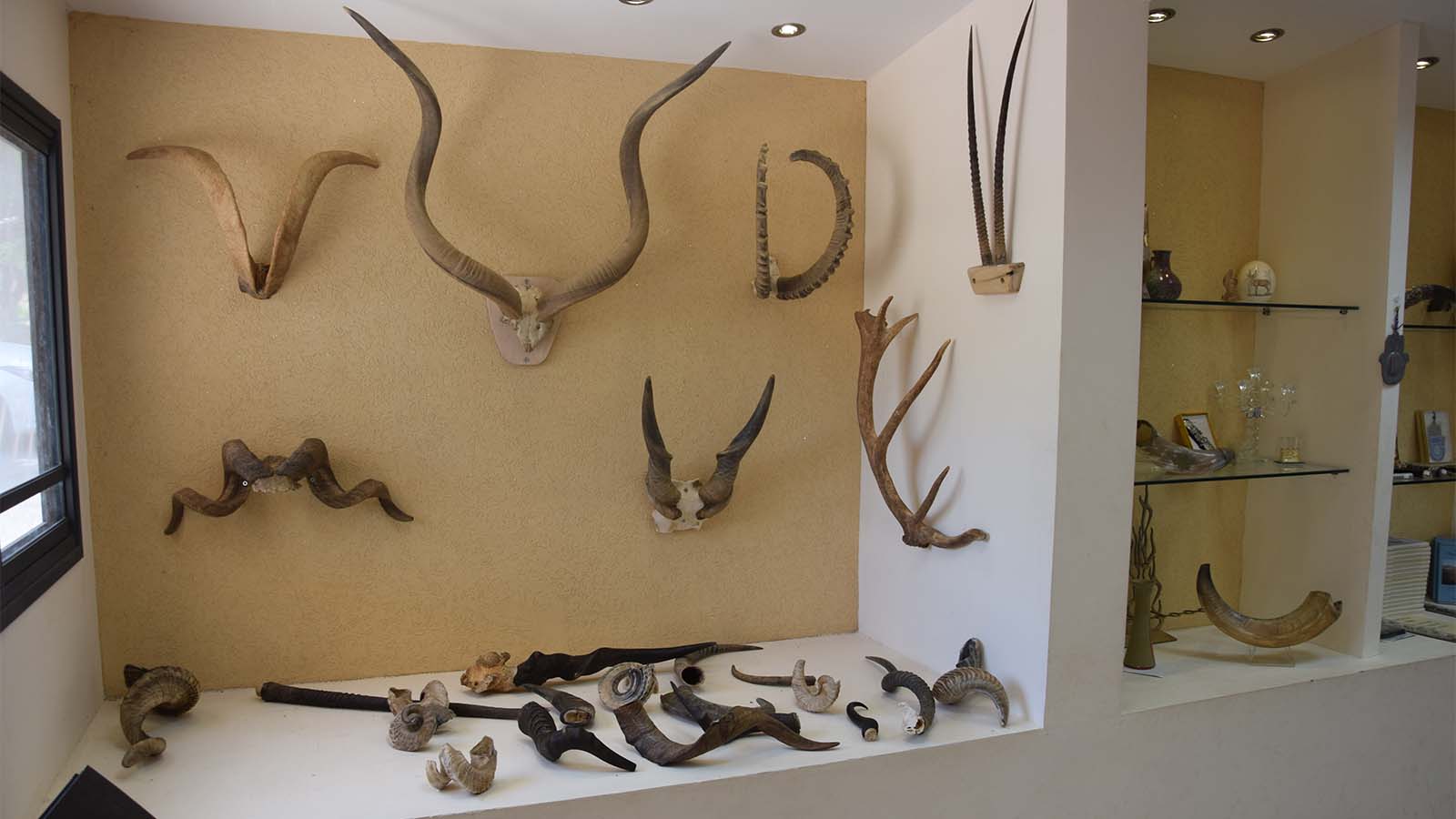
Inside the factory’s display room, Keinan says: “There’s no other room like this in the whole world.” He proudly adds, “A person who doesn’t live and love this work would have gotten out of here years ago. What keeps me here is the love that I have for it. I am doing what I love to do.”






